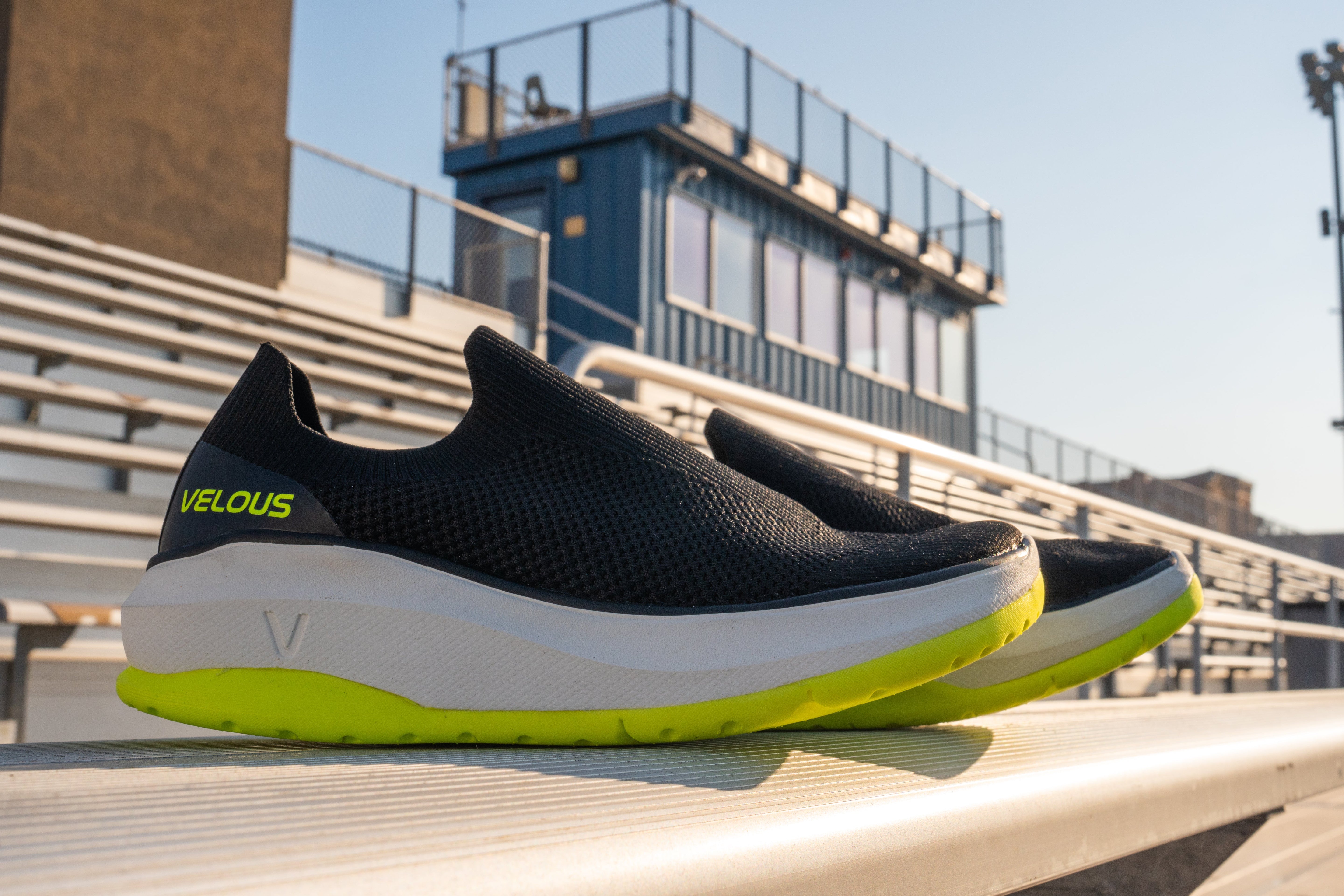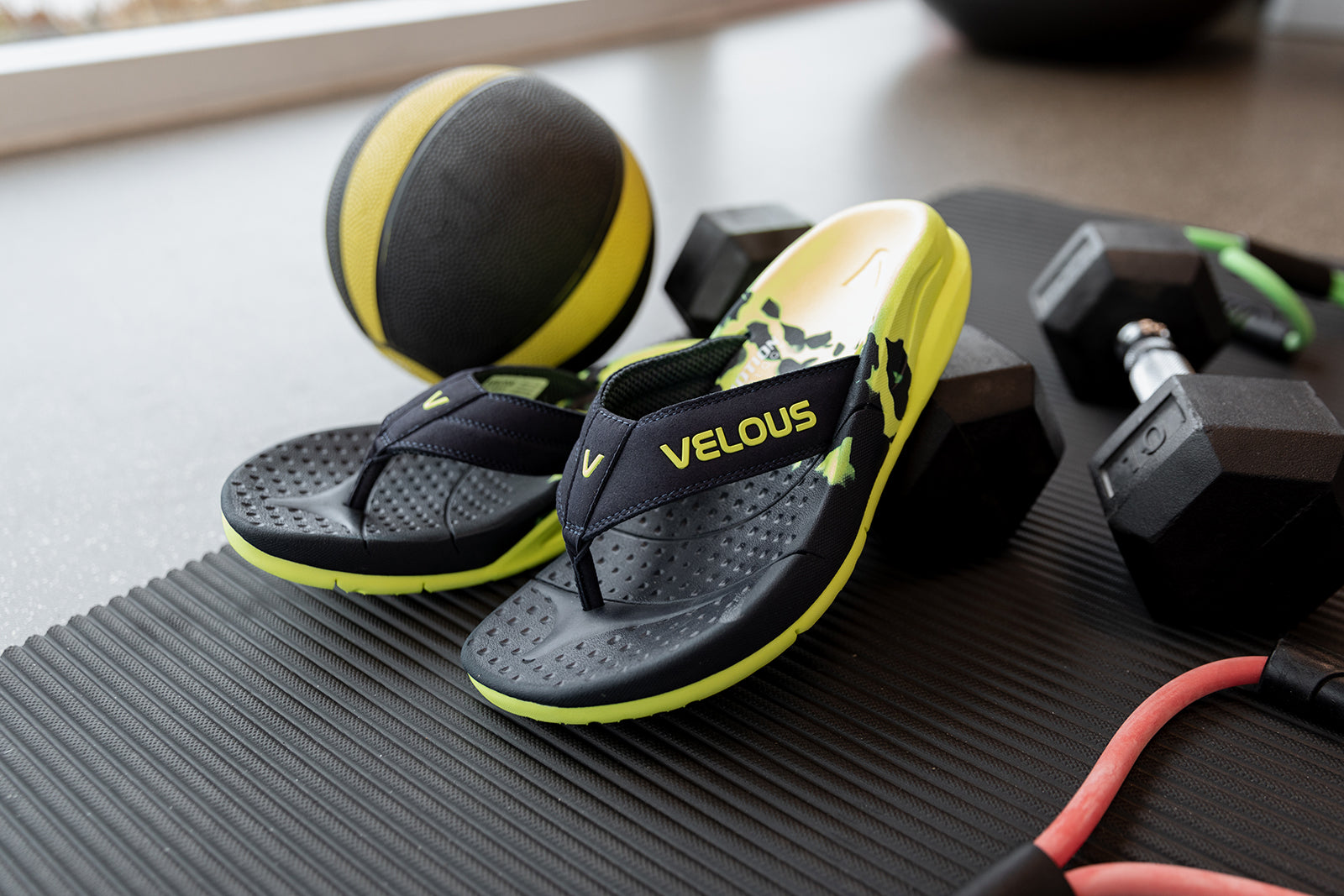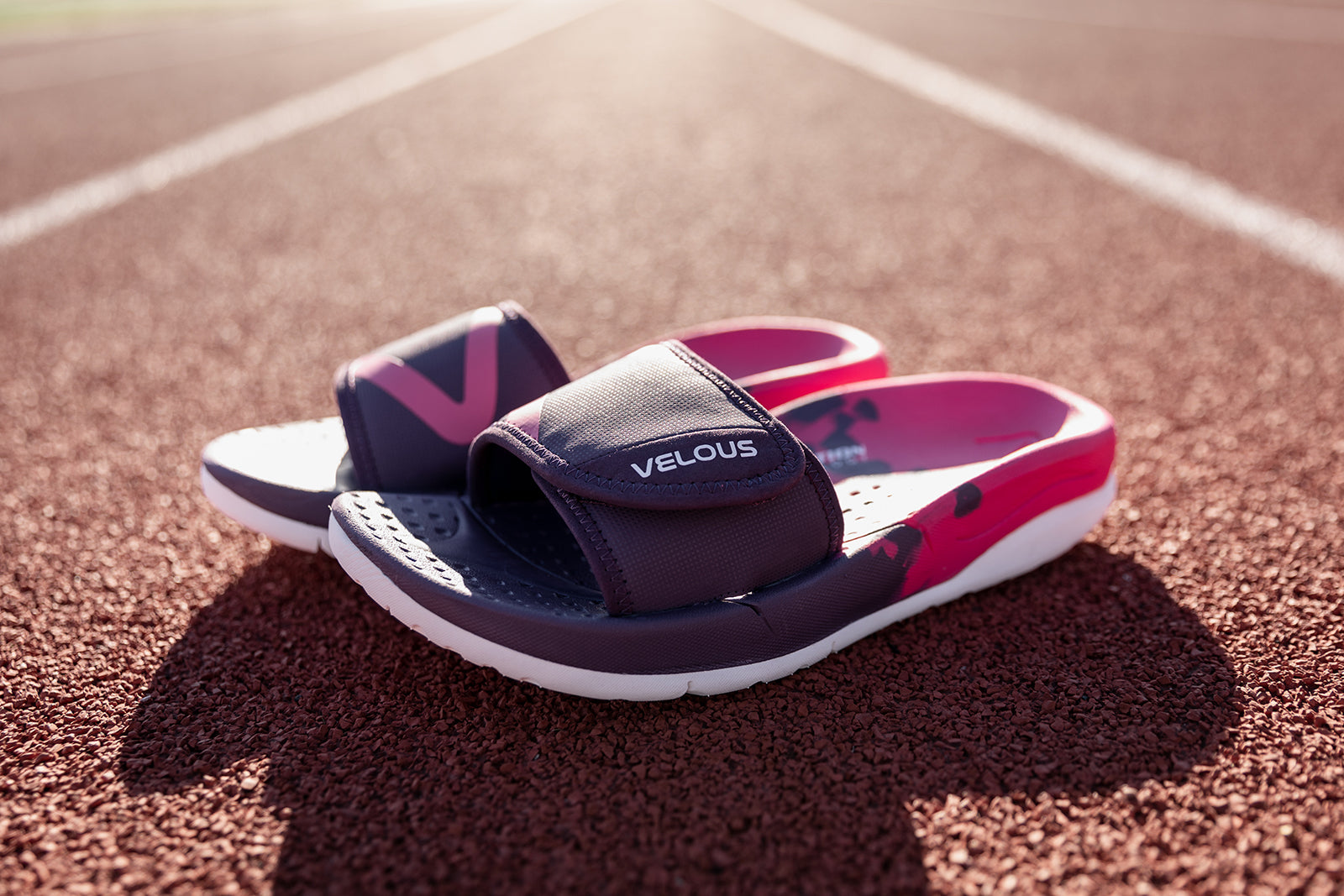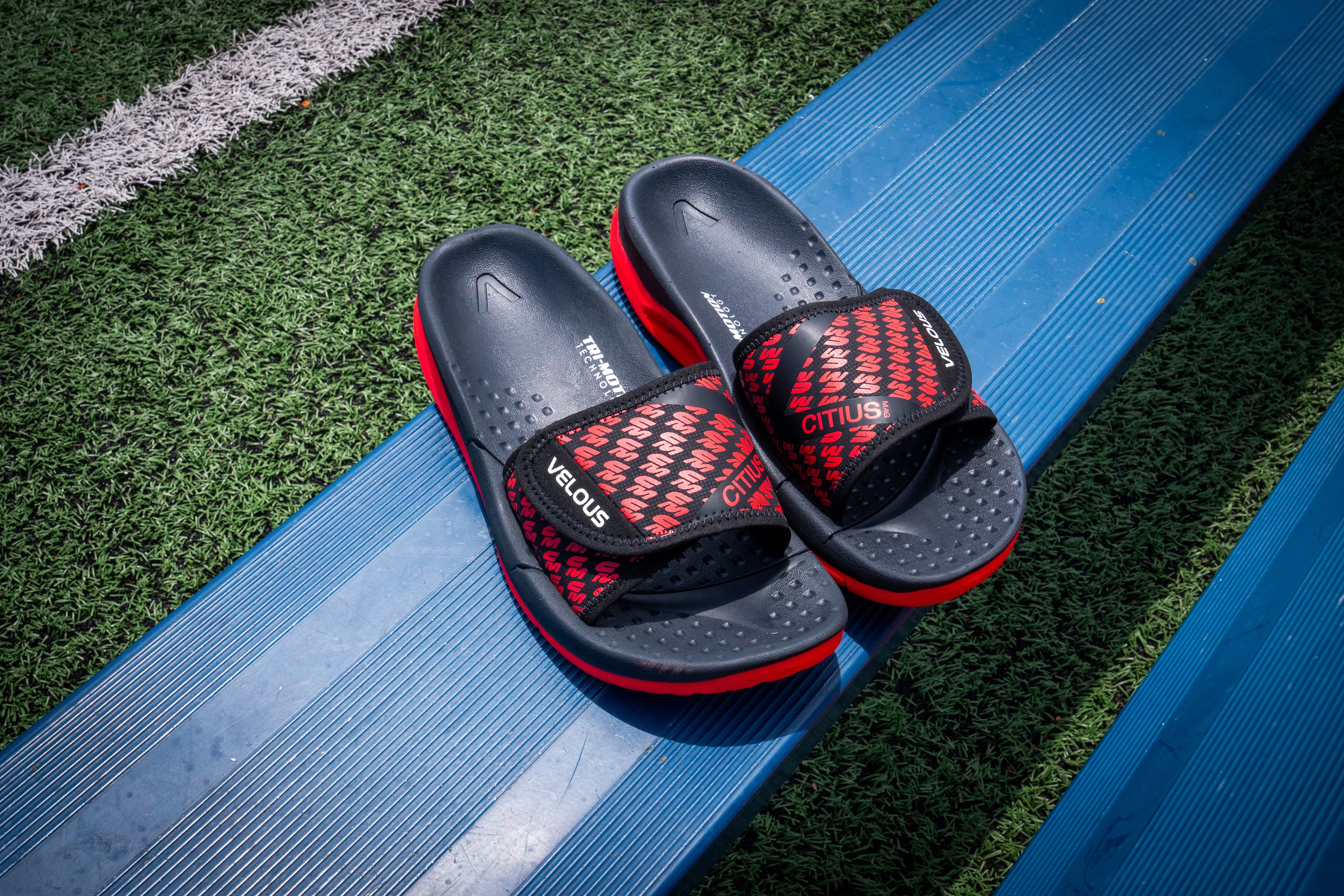Why Recovery Footwear?
Running, as much as it is a great workout, is tough on the feet. Everything from the running surface to the width of the running shoe can cause damage. Wearing the right footwear, stretching, and getting plenty of rest can minimize the negative effects of running. Recovery shoes can also help. These shoes, which are designed to be worn after a workout or run, reduce the time of recovery and help runners feel more comfortable after long, arduous runs.
Recovery shoes, while relatively new to the running shoe industry, are quickly becoming a mainstay among many runners. Endurance runners who put dozens of miles on their feet every month can prevent their feet from taking on too much damage, while casual runners can use recovery shoes to increase their running frequency and get closer to their goals. Regardless of the kind of runner, however, recovery shoes are beneficial, comfortable, and great footwear for around-the-house lounging or chores.
What Is Recovery Footwear?
Recovery footwear is a type of footwear designed to help your feet recover after exercise. Their looks can vary from brand to brand, but there are a few hallmark features shared by all recovery footwear. Primarily, recovery footwear is typically made from soft, cushioning materials and should have a supportive footbed. Recovery footwear can help to reduce pain and inflammation, improve circulation, and promote faster recovery. Though studies remain inconclusive, there is evidence that suggests a link between recovery footwear and the speed of recovery. Nevertheless, there is plenty of anecdotal evidence from athletes who swear by their recovery footwear.
Benefits of wearing recovery shoes
Recovery shoes prioritize comfort above all else. Their soft, cushioned soles, often constructed from specialized materials like EVA foam, absorb shock and impact with every step. This gentle cushioning reduces pain and inflammation in your feet, ankles, and even legs, leaving you feeling refreshed and rejuvenated after even the most demanding activities.
The design of recovery shoes goes beyond mere cushioning. Their unique construction promotes natural foot movement, enhancing blood circulation. This improved blood flow helps flush away lactic acid and other fatigue-causing toxins, significantly accelerating muscle recovery and minimizing post-workout soreness.
The benefits of recovery shoes extend beyond the immediate aftermath of exercise. Their supportive design, featuring arch support and a stable platform, helps reduce stress on your feet and ankles. This proactive approach can help prevent common overuse injuries such as shin splints and plantar fasciitis, keeping you active and pain-free for longer.
While recovery shoes excel at aiding athletes, their benefits extend beyond the gym walls. They offer comfort and support to anyone who suffers from tired, achy feet, whether it's from standing long hours at work, walking the dog, or simply navigating the daily hustle.
Types of Recovery Shoes
In recent years, three prominent designs for recovery footwear have emerged. Most recovery shoes fall under the following three categories: slides, flips, and shoes.
Recovery flips look like your average flip, but they often have a more pronounced arch support and are made from lightweight materials. While they are a good option for wearing in warm weather or after a workout, recovery flips are the least common.
Athletes have long used slides after a workout because their open-toed design makes them easy to wear. Recover slides are easy to slip on and off and are a good option for wearing around the house, after a workout, or with socks.
Similar to regular shoes, recovery shoes are close-toed. However, recovery shoes tend to be made from lightweight materials like foam and textiles, with a design that aids with breathability. For those who prefer shoes over flips and slides, a recovery shoe can be the right fit.
How To Choose Recovery Shoes: Features To Look Out For
Recovery shoes may share similar silhouettes and features, but there are subtle differences that can make a difference to your recovery time.
- The type of exercise you do: If you do high-impact exercise, such as running or jumping, you will need a recovery shoe that provides more support and cushioning than if you do low-impact exercise, such as walking or swimming.
- The climate: Recovery shoes are typically made from lightweight and breathable materials, such as mesh or EVA foam, to keep your feet cool and comfortable. This is especially important after exercise when your feet tend to sweat more.
- Washable materials: Many recovery shoes are made with washable materials, allowing you to easily clean them and keep them fresh. Regular washing is key to preventing bacteria growth. This is especially important for those wearing recovery footwear immediately after a workout.
- Thick and cushioned midsole: Recovery shoes often feature a thick, cushioned midsole to provide ample shock absorption and protect your joints. This helps reduce the impact of each step and promotes faster recovery. However, the thickness of the cushion comes down to preference. Some may feel that too much cushion makes the shoe too unstable, limiting the kinds of activities one can participate in.
- Rocker-shaped sole: Many recovery shoes incorporate a rocker-shaped sole, which is curved upwards at the toe and heel. This design promotes a natural rolling motion through the gait cycle, reducing strain on your feet and ankles. It's important to walk around to get a feel for the rocker. Having too much rocker may feel uncomfortable or unstable for some.
- Wide toe box: Recovery shoes often have a wider toe box than traditional athletic shoes. This allows your toes to spread out naturally, improving comfort and reducing the risk of blisters. Yet, it's worth noting that having a toe box that is too wide can negatively impact recovery, as the foot will shift too much to take advantage of the shoe's support.
- Easy on/off features: Many recovery shoes are designed for easy on and off, such as slip-on styles or shoes with Velcro closures. This is helpful for fatigued feet after exercise, allowing for quick and convenient use.
- Supportive design elements: While not always present, some recovery shoes incorporate additional features for support, such as a medial post for arch support or a slightly higher heel-to-toe drop for increased stability.
- Stylish options: Recovery shoes are no longer limited to solely functional designs. Many brands offer stylish options in a variety of colors and patterns, allowing you to find a pair that matches your personal style.
Remember, these are general features, and specific implementations may vary between brands and models. It's always best to research and try different shoes to find the perfect pair for your recovery needs and preferences.
The First Step to Recovery Starts With Velous Footwear
Recovery footwear offers essential comfort and support for faster recovery after physical activities. Available in styles like slides, flips, and closed-toe shoes, these shoes feature cushioned soles, wide toe boxes, and rocker-shaped soles to reduce pain, enhance circulation, and help to reduce inflammation. They cater to the needs of both serious athletes and casual users, proving beneficial not just for post-exercise but also for everyday wear. With their increasing popularity, recovery shoes are becoming a key part of both athletic and daily foot care routines.
With Velous Footwear's patent-pending Tri-MotionTM technology and proprietary Foamotion formula, you get the best of both worlds: a faster recovery time and comfort. We're so confident in our recovery slides, flips, and shoes that we offer a 30-day guarantee on all our products. If you don't like it, you can send it back for a 100% refund within 30 days. Shop our line of recovery footwear today to improve your recovery tomorrow.



